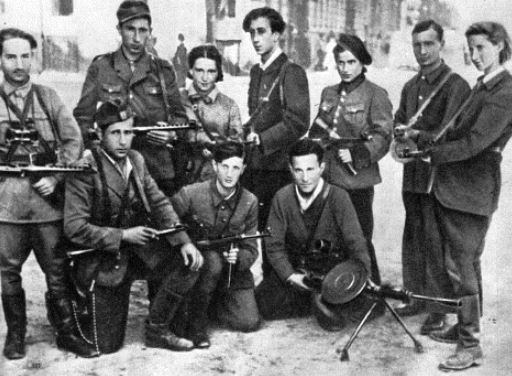The King of Comics
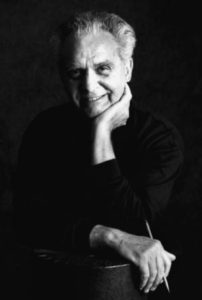
Jack Kirby (Credit: Susan Skaar)
Jacob Kurtzberg (1917-1994) was born in Manhattan to poor Jewish immigrants from Austria. He loved to draw as a child, and taught himself art techniques by studying comic strips and political cartoons in newspapers. He was rejected by the Alliance Art School (a branch of the Educational Alliance in Manhattan that was created by wealthy Jews to assist and integrate poor Eastern European Jewish immigrants), and quit Brooklyn’s Pratt Institute after a week. At 19, he started working on newspaper comic strips, first under the pseudonym Jack Curtiss. For a time he worked on Popeye cartoons, then switched to comic books. He worked on many productions over the next few years, and published under a variety of pen names, finally settling on Jack Kirby. Soon, Kirby teamed up with Joe Simon, and the two were hired by Timely Comics, later renamed Marvel Comics. Simon and Kirby’s first creation was Captain America. The comic was a huge success, but Marvel didn’t pay a good wage so they moved over to DC Comics. There, they produced a number of hits, selling over a million copies each month. During World War II, Kirby was drafted to the army and fought in Normandy. In the winter, he had severe frostbite and military doctors nearly amputated both of his legs. He was able to recover, and was awarded a number of medals, including the Bronze Star. Returning to America after the war, Kirby reunited with Simon and the two worked on a number of projects, including a stretch making popular romance comics that sold several million copies a month. At one point, they ran their own comics company. Eventually, the partnership soured and the two parted ways. Kirby eventually returned to Marvel. Partnering with Stan Lee, the two went on to revolutionize comics and usher in its “Silver Age”. Their first creation was the Fantastic Four, followed by more famous figures like the Hulk, Thor, Iron Man, Galactus, Silver Surfer, Black Panther, and the X-Men. In 1963, they combined some of these heroes to create The Avengers. Many of these characters have since been adapted to the big screen, making the Marvel Cinematic Universe the highest-grossing film franchise of all time. (The latest – and for now, final – installment of The Avengers, Endgame, opens this week and is expected to break nearly all movie records.) Kirby has been credited with being “the single most influential figure in the turnaround in Marvel’s fortunes from the time he rejoined the company.” He helped make comic book characters and their stories deeper and richer, more vibrant and alive, and more meaningful for readers young and old. Kirby also pioneered a number of new art techniques, including his famous “Kirby Krackle” energy fields. In 1970, he moved back to work for DC Comics, then came back to Marvel in 1976. During this time, he created The Eternals (rumoured to be the next big Marvel film series). Through the 1980s and until his last days, Kirby continued to create characters and draw comics. He was involved in a number of cartoons and film animations, too. Kirby felt like he never got the credit he deserved, and spent a great deal of time fighting for the rights to his own work. At the end, he only got about 2000 pages of the 13,000 pages he drew for Marvel alone. Nonetheless, the impact he had on the comic books industry, and on the world of art and film in general is immeasurable. Many artists, writers, and filmmakers point to him as their main inspiration. Kirby has been called “the King of Comics” and “one of the chief architects of the American imagination.”
How the “Splitting of the Sea” Can Change Your Life
Words of the Week
The best way to find yourself is to lose yourself in the service of others.
– Gandhi
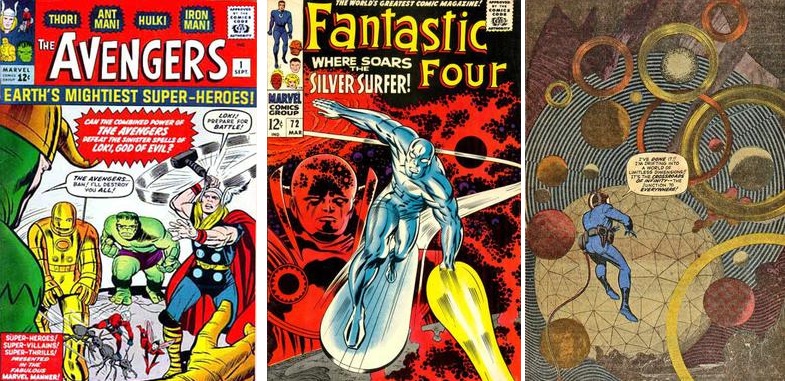
The first issue of The Avengers (September 1963); cover of Fantastic Four #72 (March 1968), showing characteristic “Kirby Krackles” in the background; a page from Fantastic Four #61 (June 1966) illustrated by Jack Kirby.

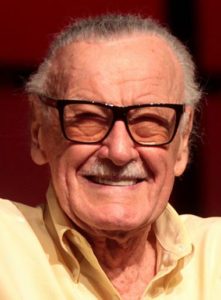
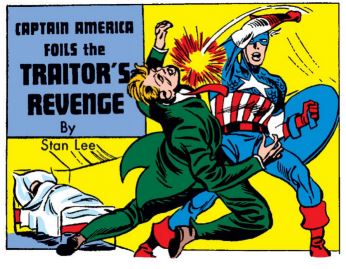
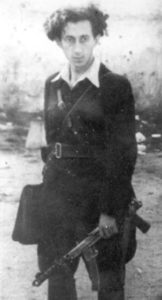 Abel “Abba” Kovner (1918-1987) was born in what is today Belarus and grew up in Vilnius (then part of Poland). As a young man, he was a member of HaShomer HaTzair, the Zionist youth movement. When the Nazis invaded Vilnius in 1941, Kovner escaped to a convent, but soon returned to the Vilna Ghetto to organize a Jewish resistance. At the start of 1942, Kovner secretly published a manifesto inside the Ghetto to inspire the Jews to fight back, writing that it was better to die than “go like lambs to the slaughter”. Along with several other young men, Kovner formed the United Partisan Organization, possibly the first armed underground Jewish group in Nazi Europe. Before they could launch their first large-scale attack, the Vilna Ghetto was liquidated in 1943, forcing the group to flee to the surrounding forests. From there, they launched a guerrilla warfare campaign against the Nazis. The small group began calling themselves “the Avengers” (HaNokmim) and were successful enough to draw the attention of the Red Army. They would go on to coordinate with the Soviets to crush the Nazis in Eastern Europe. Once the fate of the Nazis was sealed towards the end of 1944, Kovner was among the founders of a new group, called Bricha (“Escape”), which worked to get Jewish refugees out of Europe and to the Holy Land. Over the next couple of years, they would successfully move 250,000 Holocaust survivors to Israel. Having seen first-hand the horrific devastation inflicted by the Nazis, Kovner yearned for revenge. He started yet another group, called Nakam (“Vengeance”), seeking to punish Germany for the Holocaust. “Plan B” was to poison the water supply in Allied prisoner-of-war camps where Nazi SS soldiers were kept. The far more controversial and shocking “Plan A” was to poison the water supplies of several major German cities in order to kill 6 million Germans, one for each Jew lost in the Holocaust. Thankfully, Plan A was soon abandoned, though Kovner was still arrested by the British and held in a Cairo prison for several months. He did aim to accomplish Plan B, and Nakam members infiltrated a POW camp bakery in April 1946, coating the loaves of bread with arsenic. Over two thousands German soldiers fell ill, though no deaths were reported. In December 1947, Kovner joined the Haganah and fought in Israel’s Independence War as a captain of the Givati Brigade. Following this, he lived out the remainder of his life in a kibbutz, working tirelessly to strengthen the nascent state. He also helped to design several Holocaust museums, and testified at the Eichmann trial. More famously, Kovner wrote a series of poetry books (in Hebrew and Yiddish) describing the struggles he faced during the Holocaust and in Israel’s early years. This made him one of the country’s most celebrated poets and writers. For this, he won the Israeli Prize for Literature in 1970. A heavy smoker, Kovner succumbed to tracheal cancer before his 70th birthday.
Abel “Abba” Kovner (1918-1987) was born in what is today Belarus and grew up in Vilnius (then part of Poland). As a young man, he was a member of HaShomer HaTzair, the Zionist youth movement. When the Nazis invaded Vilnius in 1941, Kovner escaped to a convent, but soon returned to the Vilna Ghetto to organize a Jewish resistance. At the start of 1942, Kovner secretly published a manifesto inside the Ghetto to inspire the Jews to fight back, writing that it was better to die than “go like lambs to the slaughter”. Along with several other young men, Kovner formed the United Partisan Organization, possibly the first armed underground Jewish group in Nazi Europe. Before they could launch their first large-scale attack, the Vilna Ghetto was liquidated in 1943, forcing the group to flee to the surrounding forests. From there, they launched a guerrilla warfare campaign against the Nazis. The small group began calling themselves “the Avengers” (HaNokmim) and were successful enough to draw the attention of the Red Army. They would go on to coordinate with the Soviets to crush the Nazis in Eastern Europe. Once the fate of the Nazis was sealed towards the end of 1944, Kovner was among the founders of a new group, called Bricha (“Escape”), which worked to get Jewish refugees out of Europe and to the Holy Land. Over the next couple of years, they would successfully move 250,000 Holocaust survivors to Israel. Having seen first-hand the horrific devastation inflicted by the Nazis, Kovner yearned for revenge. He started yet another group, called Nakam (“Vengeance”), seeking to punish Germany for the Holocaust. “Plan B” was to poison the water supply in Allied prisoner-of-war camps where Nazi SS soldiers were kept. The far more controversial and shocking “Plan A” was to poison the water supplies of several major German cities in order to kill 6 million Germans, one for each Jew lost in the Holocaust. Thankfully, Plan A was soon abandoned, though Kovner was still arrested by the British and held in a Cairo prison for several months. He did aim to accomplish Plan B, and Nakam members infiltrated a POW camp bakery in April 1946, coating the loaves of bread with arsenic. Over two thousands German soldiers fell ill, though no deaths were reported. In December 1947, Kovner joined the Haganah and fought in Israel’s Independence War as a captain of the Givati Brigade. Following this, he lived out the remainder of his life in a kibbutz, working tirelessly to strengthen the nascent state. He also helped to design several Holocaust museums, and testified at the Eichmann trial. More famously, Kovner wrote a series of poetry books (in Hebrew and Yiddish) describing the struggles he faced during the Holocaust and in Israel’s early years. This made him one of the country’s most celebrated poets and writers. For this, he won the Israeli Prize for Literature in 1970. A heavy smoker, Kovner succumbed to tracheal cancer before his 70th birthday.